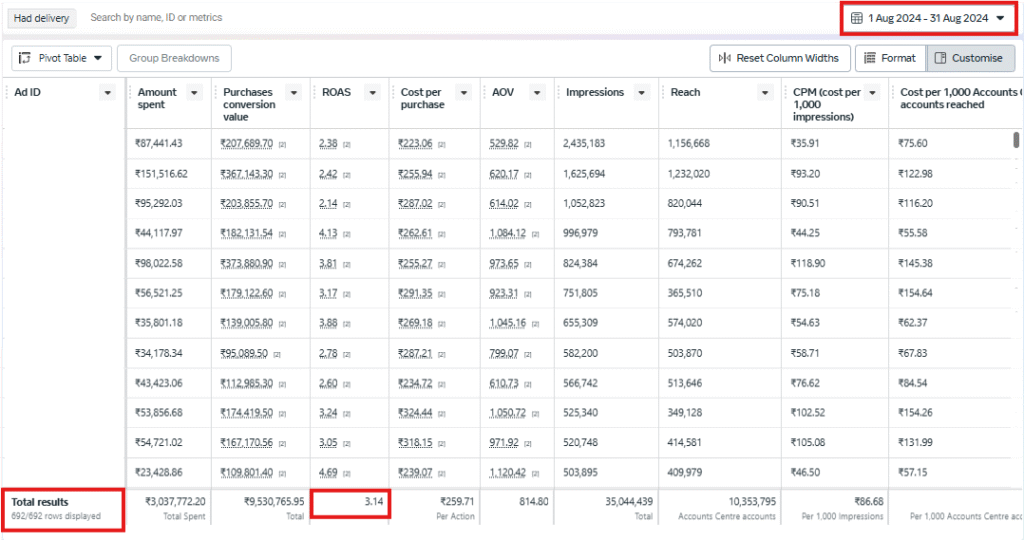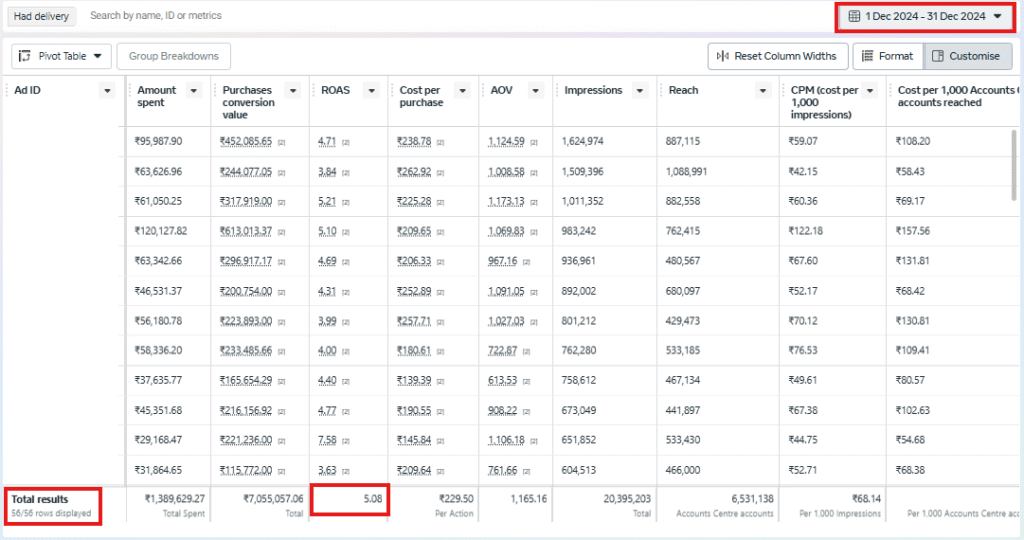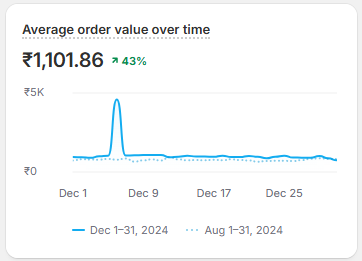Facebook Ads Portfolio
Scaling a D2C Toys Brand with Meta Ads from 3.14 ROAS to 5.08
This case study breaks down the steps I took to improve ROAS and increase average order value—using a mix of offer-led creatives, landing page tweaks, and full-funnel Meta Ads strategy.
Client Overview
A growing Direct-to-Consumer (D2C) ecommerce brand in India, selling activity-based, educational, and seasonal toys. While they had strong product-market fit, the brand faced challenges with a low average order value and an underperforming ROAS.
To respect client confidentiality, the brand name is not disclosed in this case study.
Key Challenges Identified
- ROAS was stagnating at 3.14 in August 2024.
- Average Order Value (AOV) was low (₹771), limiting profitability despite good volume.
- Engagement-heavy posts weren’t converting into website traffic or sales.

What Helped Turn Things Around

1. Smarter Campaign Structure & Audience Control
Campaigns were restructured to better align with user intent across the funnel – new prospects, and returning visitors were all shown different types of ads. Audience testing included a mix of interest-based targeting, broad audiences, and multiple lookalikes built from customer data, website purchases, and social interactions.
Performance across regions was monitored closely, and spending was reduced in areas with higher cost per acquisition (CPA). Ad frequency was brought under control by refining retargeting windows and audience exclusions.
To maintain campaign efficiency, underperforming creatives were removed, ad sets were consolidated, and the number of simultaneous live ads was carefully limited.
2. Increasing AOV with Better Offers and Page Flow
Rather than directing users to single-product pages, traffic was routed to curated collection pages, giving customers more browsing options. In parallel, the free delivery threshold was raised, which encouraged shoppers to add more items to their cart.
This combination helped push the average order value from ₹771 to ₹1,100, without relying on heavy discounts.

3. Offers That Aligned with Buying Intent
The creative approach was shifted toward time-sensitive promotional angles – such as limited-time sales and themed campaigns.
Testing was done across product ads vs. collection ads, as well as landing pages (product vs. collection) to find the highest-converting combinations.
4. Fixing the Leaks
Products with a consistently high return rate were identified and removed from active promotion, reducing unnecessary refund costs. Post-purchase WhatsApp automation was used to keep buyers informed and confident about their order – helping minimize return-triggering doubts.
Performance Snapshot

Sometimes growth doesn’t come from spending more - it comes from spending smarter. By improving the way ads were structured, aligning creatives with customer intent, and guiding users to better buying experiences, the campaigns became far more efficient without needing a bigger budget.
A Quick Note on Details
To keep client strategies safe, this case study doesn’t reveal targeting details, formats, or states that were used. Instead, it shares the approach and thinking behind what made the campaign work – something that can apply across industries.